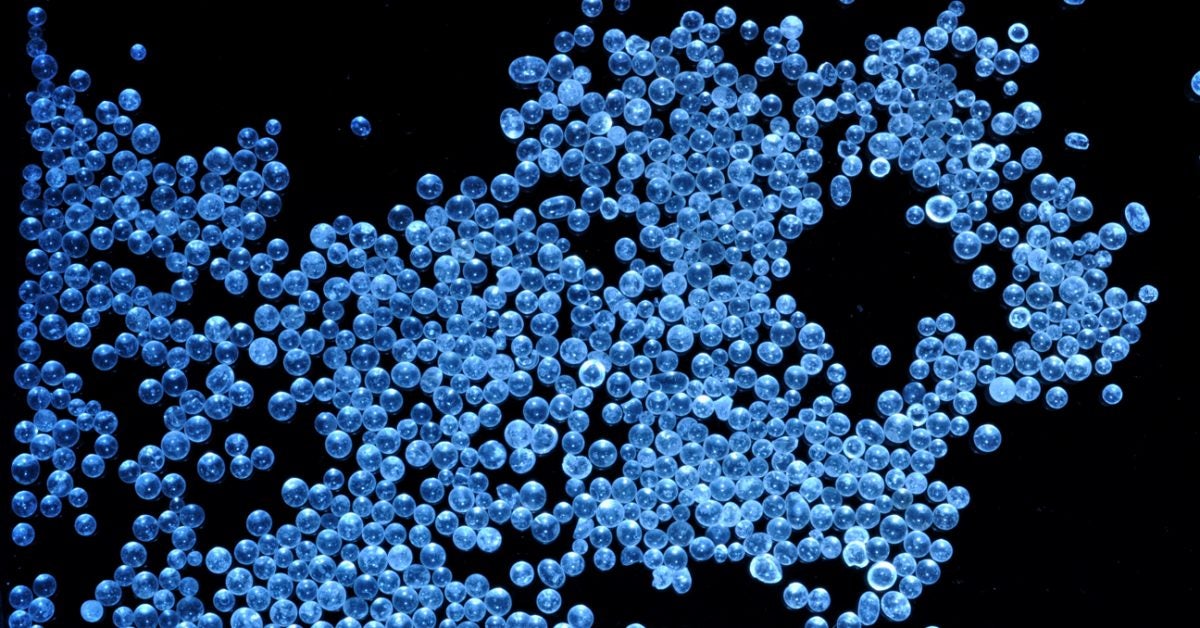Silica gel: Ingestion and effects - Medical News Today

Silica gel packets help keep moisture away from items. Commonly included in the packaging of new items, they are usually small, white packets. A person may mistake silica gel packets for sugar or salt and consume them, which can have adverse effects, especially for children or pets.
This article describes silica gel, its ingredients, and the effects of consumption on adults, children, and pets.
Silica gel is a form of silicon dioxide, a mineral found in quartz. According to the Arizona Poison and Drug Information Center, the mineral is a desiccant, which means it is a "super-soaker" because it can absorb up to 40% of its weight in water. Manufacturers put silica gel packets in packaging to help maintain dryness and freshness in products and to help prevent mold and spoilage. They are commonly found in leather goods, such as shoes and purses, as well as in electronics and display cases.
Silica gel is usually nontoxic, and the body eliminates the substance. But eating a large amount of the substance could cause an upset stomach in both humans and animals.
Sometimes, manufacturers add a substance called cobalt chloride to the silica gel. It indicates humidity, as its color changes on exposure to moisture. But cobalt chloride can be toxic.
Sometimes, a person can mistake silica gel packets for the ones that contain sugar or salt, and may consume them. Silica gel packets are generally nontoxic unless coated in cobalt chloride. It may be difficult to know if the product contains cobalt chloride. Because of this, a person should contact the American Association of Poison Control Centers at 1-800-222-1222 if they ingest the silica gel packets.
For the most part, consuming silica gel packets should not cause any adverse effects in adults.
While silica gel is generally nontoxic, ingestion of the packets can cause choking in children. If a person notices a child choking, they should call 911 and provide first aid. A person needs to be aware that forceful coughing can sometimes be mistaken for choking.
If a child is older than age 1, a person can perform the Heimlich maneuver to attempt to dislodge the packet. They should:
- stand behind the child and wrap their arms around the child's waist
- make a fist with one hand, with the thumb pointing toward the child's stomach
- put the fist in the space below the child's chest and above the child's belly button
- grabbing the fist with the other hand, make a quick, forceful push upward toward the abdomen
- repeat as necessary until the packet dislodges
If the child is younger than age 1, an adult should hold the child face down on their forearm, with the arm resting on their upper thigh. A person can then use the heel of their other hand to strike the child between the shoulder blades. They may need to deliver several strikes before the packet dislodges.
Regardless of the child's age, a person should not put their fingers in the child's mouth. Doing so could potentially cause the packet to go farther into the child's airway.
If a child swallowed one or more packets but is not choking, this online tool from Poison Control may provide guidance, or a person can call 1-800-222-1222. Advice may include giving the child a few sips of water to help reduce any mouth discomfort and to ensure they will not choke or have trouble swallowing after eating the gel packet.
Pet food manufacturers may add silicon gel packets to pet food packaging to reduce moisture and potential mold that would spoil the food. But the silica gel packets can retain the food smell, and pets may eat them.
According to the American Society for the Prevention of Cruelty to Animals, if a pet eats silica gel packets, they may experience stomach upset and diarrhea. If the animal consumed large amounts of silica gel, it could be at risk for intestinal obstruction. Symptoms of this condition in pets include:
- appetite loss
- bloating
- dehydration
- diarrhea
- hunching
- vomiting
- whining
If a person's pet has eaten silica gel, they should seek veterinary attention.
A person should seek medical advice if anyone has accidentally ingested silica gel packets. A good place to start is Poison Control. Their experts can advise on what steps to take, whether this involves seeking further medical attention or waiting to see if other symptoms occur.
Accidentally eating silica gel is generally not a cause for concern, unless the packets are coated in cobalt chloride, which is toxic. However, in general, eating uncoated silica gel packets may result in a mildly upset stomach, although children may choke on the packets. Even if choking has not occurred, a person should call Poison Control to ensure they should not take any further steps in treating the accidental ingestion. Pets may also have serious side effects from ingestion of the silica gel packets, and a person should seek veterinary advice on suitable treatment.

Comments
Post a Comment